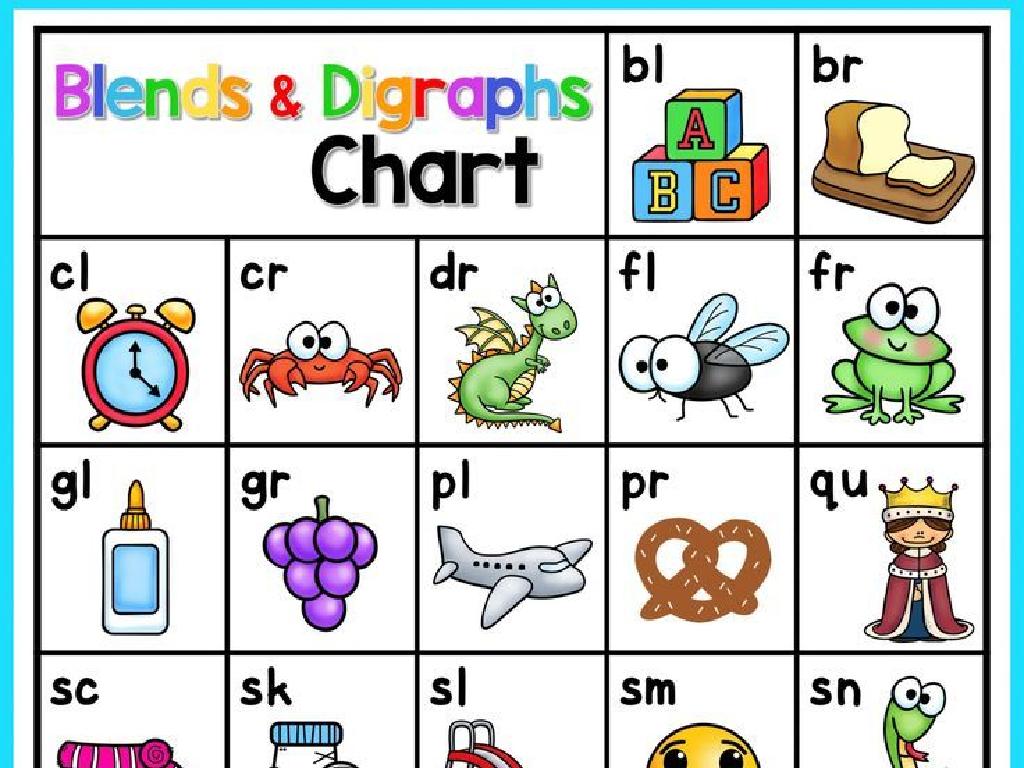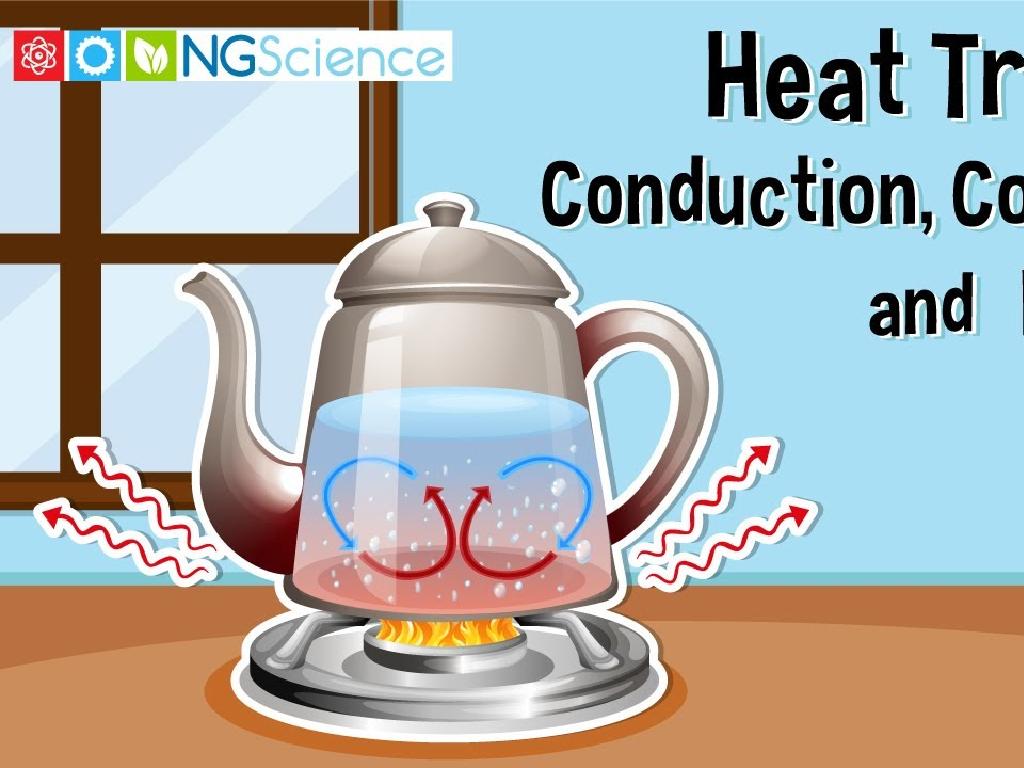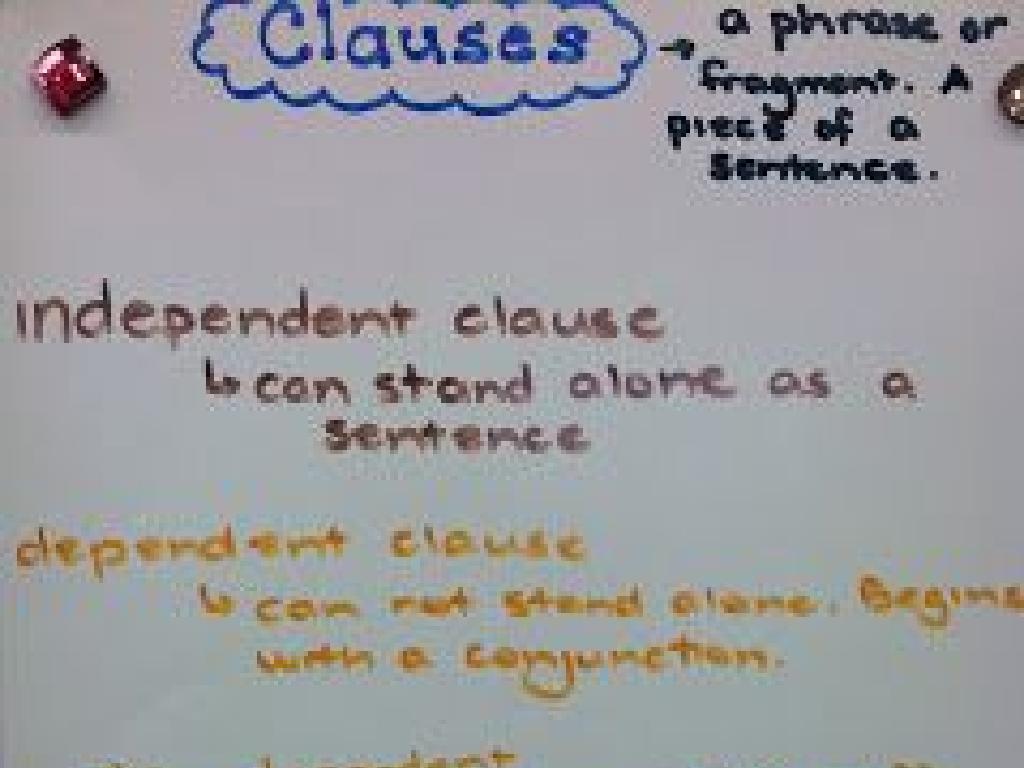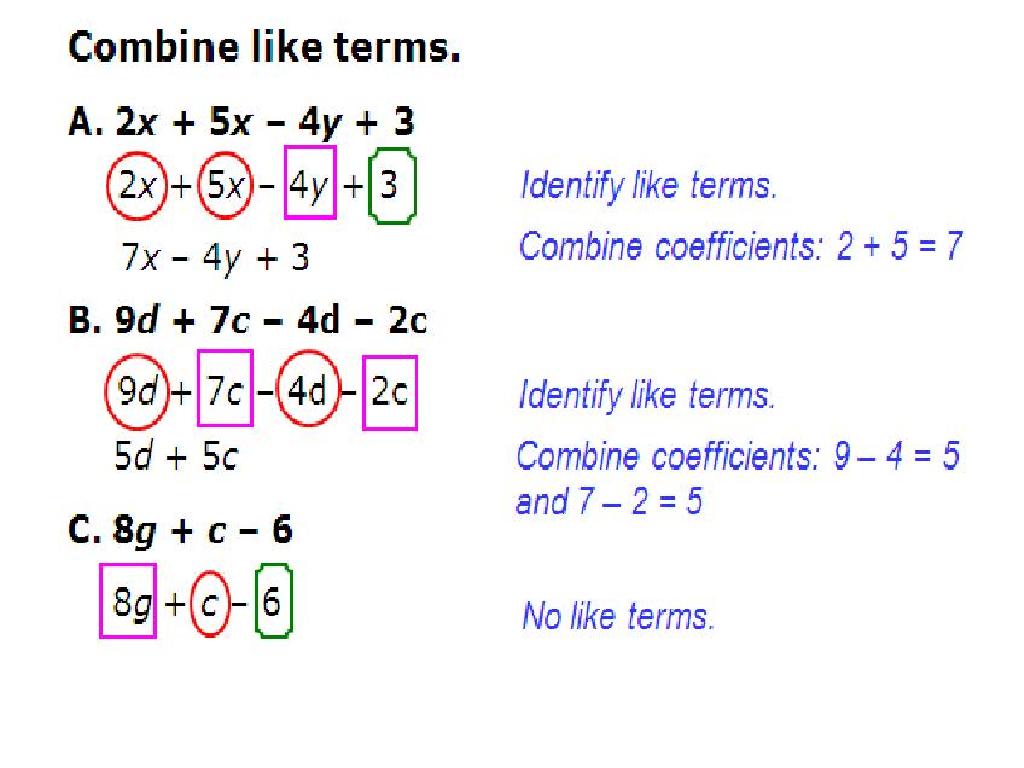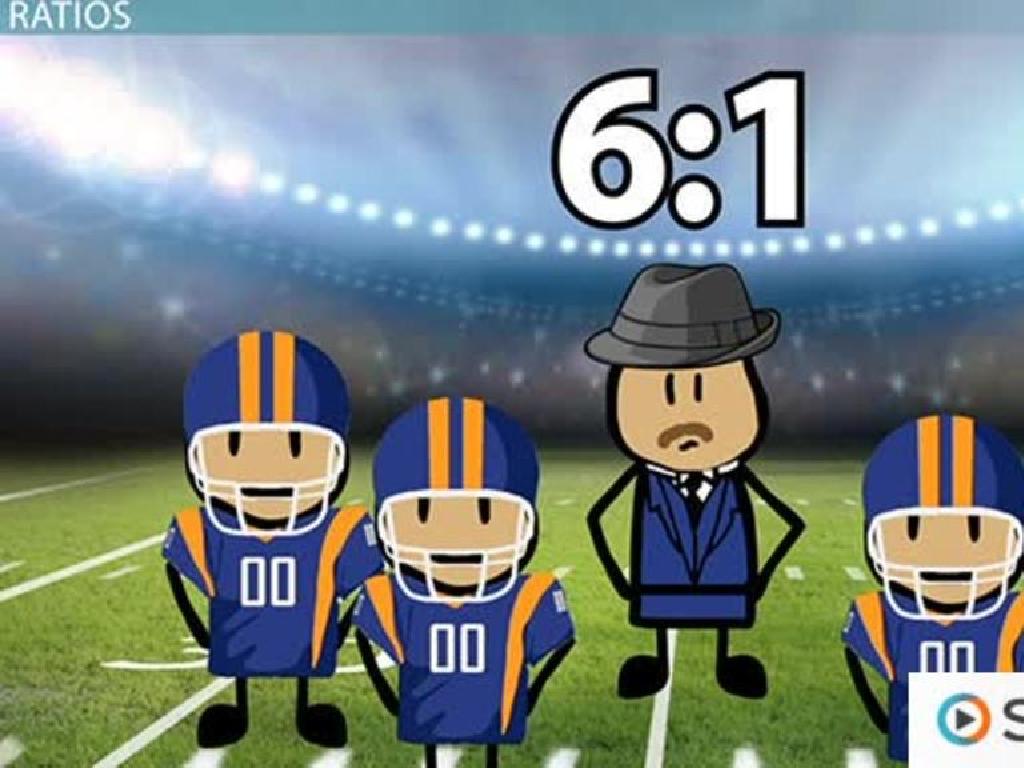Commas: Review
Subject: Language arts
Grade: Third grade
Topic: Punctuation
Please LOG IN to download the presentation. Access is available to registered users only.
View More Content
Welcome to Punctuation Land: Commas Adventure!
– Commas: Why we use them?
– Commas help us take a pause and make sentences clear.
– Reviewing our comma knowledge
– We’ve learned commas separate items in a series and more.
– Commas in lists
– Example: I like apples, bananas, and cherries.
– Commas in dates and addresses
– Example: July 4, 1776, Philadelphia, PA.
|
This slide is designed to engage third graders in a fun review of how commas are used in writing. Start by discussing the purpose of commas and how they help clarify sentences by signaling a pause. Refresh the students’ memory on the rules of commas that they have previously learned, such as separating items in a list or using them in dates and addresses. Provide clear examples for each case to solidify their understanding. Encourage the students to come up with their own examples and share them with the class. This interactive review will help reinforce their punctuation skills.
The Power of Pauses: Understanding Commas
– Commas are like a breath in reading
– They help separate our ideas
– For example, in a list: apples, oranges, and bananas
– Commas make sentences easier to understand
– It’s like a signal for a short pause when speaking
– Imagine sentences without any pauses!
|
This slide introduces the concept of commas as natural pauses in sentences, much like taking a breath when speaking. Emphasize the importance of commas in separating ideas, which helps in making the meaning of sentences clear. Provide examples of sentences with and without commas to illustrate the difference. Encourage students to think about how confusing it would be to read without these pauses. Activities can include reading sentences aloud with and without commas to feel the difference and rewriting run-on sentences with proper comma usage.
Commas in a Series
– Commas list items in a series
– They separate things like in a shopping list
– Example: pencils, erasers, notebooks
– ‘I need pencils, erasers, and notebooks.’
– Practice listing favorite fruits
– Write fruits you like with commas in between
|
This slide introduces the concept of using commas to separate items in a series, which is a fundamental aspect of punctuation for third graders. Start by explaining that commas are like pauses that help us organize items when we list them, similar to taking a breath when speaking. Use everyday examples like a shopping list to make it relatable. The example provided should be written on the board, and students should be asked to identify the commas and the items listed. For the practice activity, encourage students to think of at least three fruits they enjoy and write them down with commas separating each item. This exercise will help reinforce their understanding of how commas are used in a series. During the next class, review some of the lists to ensure comprehension.
Commas with Conjunctions
– Commas connect sentences
– Use with ‘and’, ‘but’, ‘or’
– Example: Playing outside wish
– I wanted to play outside, but it was raining.
– Let’s make our own examples!
|
This slide introduces the use of commas when connecting two sentences with conjunctions such as ‘and’, ‘but’, and ‘or’. Explain that a comma should be placed before the conjunction when it joins two independent clauses. Use the example provided to illustrate how the comma changes the meaning and clarity of the sentence. Encourage students to think of two related sentences they can join using a conjunction and a comma. During the next class, have students share their examples, fostering a practical understanding of comma usage with conjunctions.
Commas for Extra Information
– Commas add extra details
– Use commas to include more about a subject
– Example: Describing my brother
– ‘My brother, who is very tall, can reach the top shelf.’
– Practice adding information
– Try it with a sentence about your pet or favorite toy
|
This slide introduces the concept of using commas to insert additional information into a sentence without changing its main meaning. The example provided helps illustrate how extra details can be added to describe someone or something better. Encourage students to think of sentences about familiar subjects and practice inserting extra information using commas. This exercise will help them understand how commas can clarify details and add interest to their writing. During the next class, review their sentences to ensure they’re using commas correctly and praise creative uses of extra information.
Let’s Practice Using Commas!
– I’ll write sentences on the board
– Help me find where commas go
– Look for places in sentences that need a pause
– Become a comma detective
– Use your detective skills to spot missing commas
– Get ready for some fun!
|
This interactive activity is designed to engage the students in the practical application of comma usage. As you write sentences on the board, encourage the students to actively participate by identifying where commas are needed. Explain that commas are like traffic signals for readers, providing necessary pauses. As they suggest where to place commas, ask them to explain their reasoning to reinforce their understanding. This will not only make them more attentive readers but also improve their writing skills. Be prepared with a list of sentences that cover a variety of comma rules, such as listing items, separating clauses, and setting off introductory elements. Praise their efforts and provide immediate feedback to ensure a positive learning experience.
Comma Rules Recap
– Commas create pauses in sentences
– Like taking a breath when speaking
– They list items in a series
– For example: apples, bananas, and cherries
– They join sentences with conjunctions
– For example: I ran home, and I was tired.
– They add extra details to sentences
– Such as: My brother, a brave firefighter, saved the cat.
|
This slide is a brief review of the basic rules for using commas. Commas are like signals in writing that tell the reader to take a short pause. They are used to separate items in a list, such as different foods or activities. When two sentences are connected by a conjunction like ‘and’ or ‘but,’ a comma comes before the conjunction. Commas also help to include additional information about a noun, which can often be removed without changing the meaning of the sentence. Encourage students to practice reading sentences aloud, pausing slightly at each comma, and to create their own sentences using commas for each rule.
Class Activity: Comma Art!
– Craft your ‘Comma Creature’
– Write sentences with commas
– Use commas in a list or after an intro
– Decorate your creature
– Present to the class
– Explain your comma usage
|
This creative activity is designed to help students understand the use of commas in a fun and engaging way. Provide students with paper and markers to create their ‘Comma Creature.’ Once their creature is crafted, instruct them to write sentences on its body, using commas correctly. They could write lists or include introductory elements that require a comma. Encourage them to decorate their creatures to bring them to life. After completion, each student will share their creature with the class and explain how they used commas in their sentences. This will reinforce their understanding of commas and allow for peer learning. Possible variations of the activity could include creating comma stories or using the creatures in a punctuation play.

